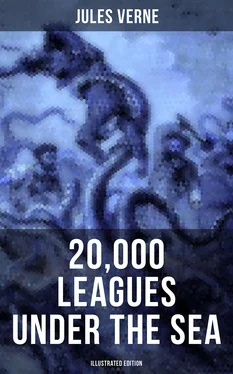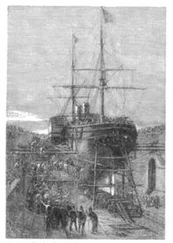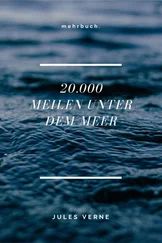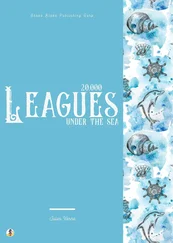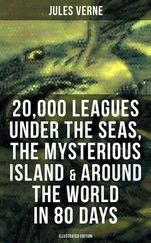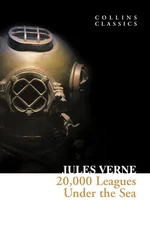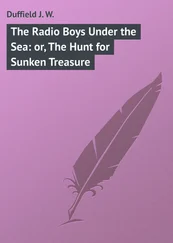Jules Verne
20,000 LEAGUES UNDER THE SEA
(Illustrated Edition)
Published by

Books
- Advanced Digital Solutions & High-Quality eBook Formatting -
musaicumbooks@okpublishing.info
2017 OK Publishing
ISBN 978-80-272-1840-0
Introduction
Units of Measure
FIRST PART
1. A Runaway Reef
2. The Pros and Cons
3. As Master Wishes
4. Ned Land
5. At Random!
6. At Full Steam
7. A Whale of Unknown Species
8. “Mobilis in Mobili”
9. The Tantrums of Ned Land
10. The Man of the Waters
11. The Nautilus
12. Everything Through Electricity
13. Some Figures
14. The Black Current
15. An Invitation in Writing
16. Strolling the Plains
17. An Underwater Forest
18. Four Thousand Leagues Under the Pacific
19. Vanikoro
20. The Torres Strait
21. Some Days Ashore
22. The Lightning Bolts of Captain Nemo
23. “Aegri Somnia”
24. The Coral Realm
SECOND PART
1. The Indian Ocean
2. A New Proposition From Captain Nemo
3. A Pearl Worth Ten Million
4. The Red Sea
5. Arabian Tunnel
6. The Greek Islands
7. The Mediterranean In Forty-Eight Hours
8. The Bay of Vigo
9. A Lost Continent
10. The Underwater Coalfields
11. The Sargasso Sea
12. Sperm Whales and Baleen Whales
13. The Ice Bank
14. The South Pole
15. Accident or Incident?
16. Shortage of Air
17. From Cape Horn to the Amazon
18. The Devilfish
19. The Gulf Stream
20. In Latitude 47° 24’ and Longitude 17° 28’
21. A Mass Execution
22. The Last Words of Captain Nemo
23. Conclusion
Illustrations by Alphonse de Neuville
Table of Contents
“The deepest parts of the ocean are totally unknown to us,” admits Professor Aronnax early in this novel. “What goes on in those distant depths? What creatures inhabit, or could inhabit, those regions twelve or fifteen miles beneath the surface of the water? It’s almost beyond conjecture.”
Jules Verne (1828-1905) published the French equivalents of these words in 1869, and little has changed since. 126 years later, a Time cover story on deep-sea exploration made much the same admission: “We know more about Mars than we know about the oceans.” This reality begins to explain the dark power and otherworldly fascination of Twenty Thousand Leagues Under the Seas.
Born in the French river town of Nantes, Verne had a lifelong passion for the sea. First as a Paris stockbroker, later as a celebrated author and yachtsman, he went on frequent voyages-to Britain, America, the Mediterranean. But the specific stimulus for this novel was an 1865 fan letter from a fellow writer, Madame George Sand. She praised Verne’s two early novels Five Weeks in a Balloon (1863) and Journey to the Center of the Earth (1864), then added: “Soon I hope you’ll take us into the ocean depths, your characters traveling in diving equipment perfected by your science and your imagination.” Thus inspired, Verne created one of literature’s great rebels, a freedom fighter who plunged beneath the waves to wage a unique form of guerilla warfare.
Initially, Verne’s narrative was influenced by the 1863 uprising of Poland against Tsarist Russia. The Poles were quashed with a violence that appalled not only Verne but all Europe. As originally conceived, Verne’s Captain Nemo was a Polish nobleman whose entire family had been slaughtered by Russian troops. Nemo builds a fabulous futuristic submarine, the Nautilus, then conducts an underwater campaign of vengeance against his imperialist oppressor.
But in the 1860s France had to treat the Tsar as an ally, and Verne’s publisher, Pierre Hetzel, pronounced the book unprintable. Verne reworked its political content, devising new nationalities for Nemo and his great enemy—information revealed only in a later novel, The Mysterious Island (1875); in the present work Nemo’s background remains a dark secret. In all, the novel had a difficult gestation. Verne and Hetzel were in constant conflict and the book went through multiple drafts, struggles reflected in its several working titles over the period 1865-69: early on, it was variously called Voyage Under the Waters, Twenty-five Thousand Leagues Under the Waters, Twenty Thousand Leagues Under the Waters, and A Thousand Leagues Under the Oceans.
Verne is often dubbed, in Isaac Asimov’s phrase, “the world’s first science-fiction writer.” And it’s true, many of his sixty-odd books do anticipate future events and technologies: From the Earth to the Moon (1865) and Hector Servadac (1877) deal in space travel, while Journey to the Center of the Earth features travel to the earth’s core. But with Verne the operative word is “travel,” and some of his best-known titles don’t really qualify as sci-fi: Around the World in Eighty Days (1872) and Michael Strogoff (1876) are closer to “travelogs”—adventure yarns in far-away places.
These observations partly apply here. The subtitle of the present book is An Underwater Tour of the World, so in good travelog style, the Nautilus’s exploits supply an episodic story line. Shark attacks, giant squid, cannibals, hurricanes, whale hunts, and other rip-roaring adventures erupt almost at random. Yet this loose structure gives the novel an air of documentary realism. What’s more, Verne adds backbone to the action by developing three recurring motifs: the deepening mystery of Nemo’s past life and future intentions, the mounting tension between Nemo and hot-tempered harpooner Ned Land, and Ned’s ongoing schemes to escape from the Nautilus. These unifying threads tighten the narrative and accelerate its momentum.
Other subtleties occur inside each episode, the textures sparkling with wit, information, and insight. Verne regards the sea from many angles: in the domain of marine biology, he gives us thumbnail sketches of fish, seashells, coral, sometimes in great catalogs that swirl past like musical cascades; in the realm of geology, he studies volcanoes literally inside and out; in the world of commerce, he celebrates the high-energy entrepreneurs who lay the Atlantic Cable or dig the Suez Canal. And Verne’s marine engineering proves especially authoritative. His specifications for an open-sea submarine and a self-contained diving suit were decades before their time, yet modern technology bears them out triumphantly.
True, today’s scientists know a few things he didn’t: the South Pole isn’t at the water’s edge but far inland; sharks don’t flip over before attacking; giant squid sport ten tentacles not eight; sperm whales don’t prey on their whalebone cousins. This notwithstanding, Verne furnishes the most evocative portrayal of the ocean depths before the arrival of Jacques Cousteau and technicolor film.
Lastly the book has stature as a novel of character. Even the supporting cast is shrewdly drawn: Professor Aronnax, the career scientist caught in an ethical conflict; Conseil, the compulsive classifier who supplies humorous tag lines for Verne’s fast facts; the harpooner Ned Land, a creature of constant appetites, man as heroic animal.
But much of the novel’s brooding power comes from Captain Nemo. Inventor, musician, Renaissance genius, he’s a trail-blazing creation, the prototype not only for countless renegade scientists in popular fiction, but even for such varied figures as Sherlock Holmes or Wolf Larsen. However, Verne gives his hero’s brilliance and benevolence a dark underside—the man’s obsessive hate for his old enemy. This compulsion leads Nemo into ugly contradictions: he’s a fighter for freedom, yet all who board his ship are imprisoned there for good; he works to save lives, both human and animal, yet he himself creates a holocaust; he detests imperialism, yet he lays personal claim to the South Pole. And in this last action he falls into the classic sin of Pride. He’s swiftly punished. The Nautilus nearly perishes in the Antarctic and Nemo sinks into a growing depression.
Читать дальше
